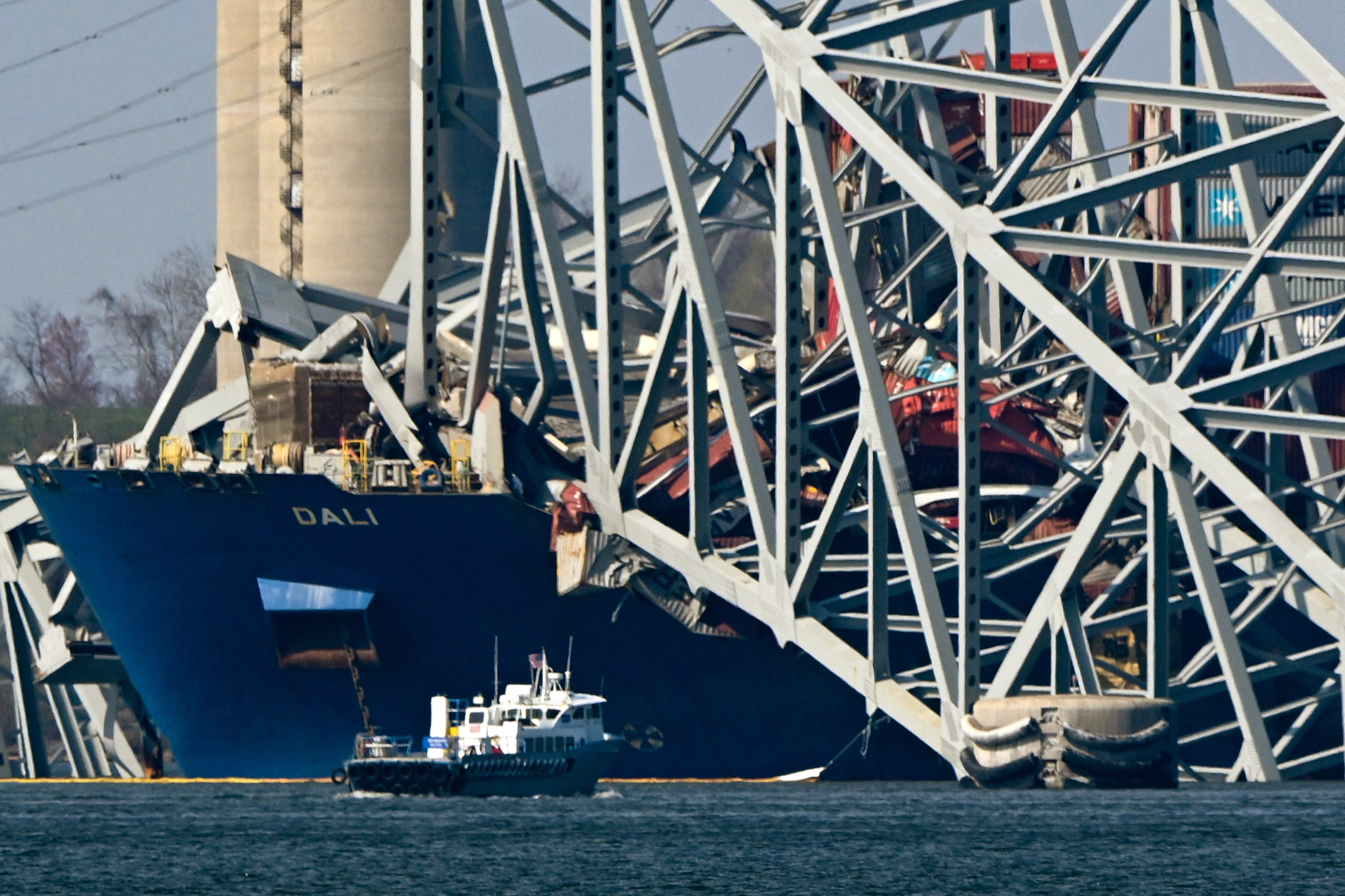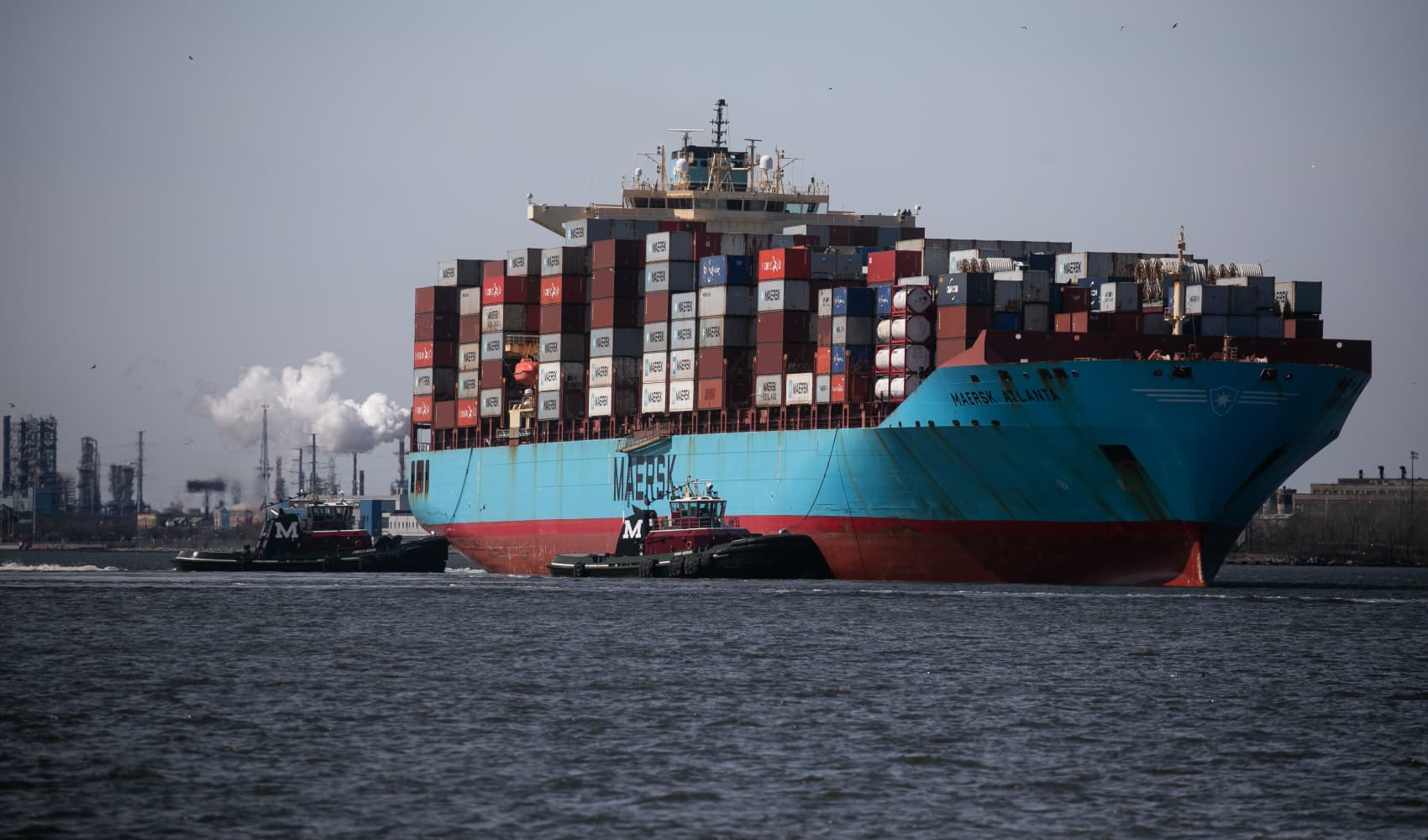President Joe Biden is expected to get a firsthand look Friday at efforts to clear away the hulking remains of the collapsed Francis Scott Key Bridge in Baltimore, as cranes, ships and diving crews work to reopen one of the nation’s main shipping lanes.
Biden will receive updates from the U.S. Coast Guard and Army Corps of Engineers. Eight workers — all immigrants from Mexico, Guatemala, Honduras or El Salvador — were filling potholes on the bridge when it was hit by a huge cargo ship and collapsed in the middle of the night of March 26. Two men were rescued, but the bodies of only two of the six who died have been recovered.
The president plans to meet with the families of the victims.
Officials have established a temporary, alternate channel for vessels involved in clearing debris. The Army Corps of Engineers hopes to open a limited-access channel for barge container ships and some vessels moving cars and farm equipment by the end of this month and to restore normal capacity to Baltimore’s port by May 31, the White House says.
That’s important since longer delays in reopening shipping lanes could send shockwaves through the economy. As much as $200 million in cargo normally moves through Baltimore’s port per day, and it is the leading hub for importing and exporting vehicles.
Of more immediate concern might be covering the costs of cleanup and building a new bridge.
The Federal Highway Administration has provided $60 million in “quick release” emergency relief funds to get started. Exactly how much the collapse will cost is unclear, though some experts estimate recovery will take at least $400 million and 18 months.
Biden said within hours of the collapse that “the federal government will pay for the entire cost of reconstructing that bridge, and I expect the Congress to support my effort.” Pennsylvania Republican Rep. Dan Meuser called a promise made so quickly after the disaster “outrageous,” telling Fox News Channel, “The first reaction, in fact the only reaction, tends to be to spend.”
Senate Republican Leader Mitch McConnell was more amenable to Biden’s call, likening the bridge collapse to assistance that flows after natural disasters and saying ”the federal government will step up and do the lion’s share” of funding. But authorization is likely no slam-dunk in Congress.
The White House announced Friday it is asking Congress to authorize the federal government to cover 100% of the collapsed bridge cleanup and reconstruction costs, rather than seeking funding through a separate, emergency supplemental funding request.
In a letter to congressional leaders, Office of Management and Budget Director Shalanda Young noted similar techniques were used for recovery and rebuilding efforts that received bipartisan congressional support in 2007, when a highway bridge in downtown Minneapolis collapsed during evening rush hour, killing 13 people.
“We are asking the Congress to join us in demonstrating our commitment to aid in recovery efforts,” Young wrote.
A lot has changed in 17 years, however, and a call for bipartisan funding could be a tough sell today.
The conservative House Freedom Caucus issued a Friday statement saying, “If it proves necessary to appropriate taxpayer money to get one of America’s busiest ports back online, Congress should ensure it is fully offset and that burdensome regulations” are waved. It was referring to potential federal spending cuts elsewhere and to regulations like the Endangered Species Act.
The caucus’s letter also suggested that approval for bridge recovery funds be tied to the Biden administration agreeing to lift a pause it has imposed on exportation of liquified natural gas.
The funding questions only serve to heighten the collapse’s political implications as Biden squares off with former President Donald Trump in November’s election.
It’s the second major disaster along the country’s busy northeastern hub in as many years. Last summer, an overpass along Interstate 95 in Philadelphia caught fire and collapsed after a tanker truck slammed into it. Federal and state officials moved quickly on temporary repairs and ultimately reopened that section of the highway faster than expected.
But the cleanup and repairs in Baltimore will take far longer and be far more costly, making the chances it is a net political positive for Biden — especially in time for Election Day — far murkier.
That hasn’t stopped the Biden administration from championing anew a $1 trillion-plus public works package that cleared Congress in 2021.
“Let’s not forget, that infrastructure law is now going to really deal with infrastructure in a generation,” White House press secretary Karine Jean-Pierre said this week. She contrasted that with the Trump administration, which she said turned the issue “into a joke” by making frequent promises to secure infrastructure funding but doing “absolutely nothing.”
The bridge collapse also has thrust into the national spotlight Maryland’s Democratic Gov. Wes Moore, 45, a leading voice in Biden’s reelection campaign’s effort to energize young voters on the 81-year-old president’s behalf.
The president himself has traveled the country showcasing construction projects on highways, bridges and tunnels. In 2022, he arrived for an event in Pittsburgh just hours after a bridge nearby collapsed. Promoting the public works package also has allowed the president to lean into his love of train travel and many years commuting to and from Washington on Amtrak as a Delaware senator.
Biden said last week that the Key bridge was one “I’ve been over many, many times commuting.”



0 Comments